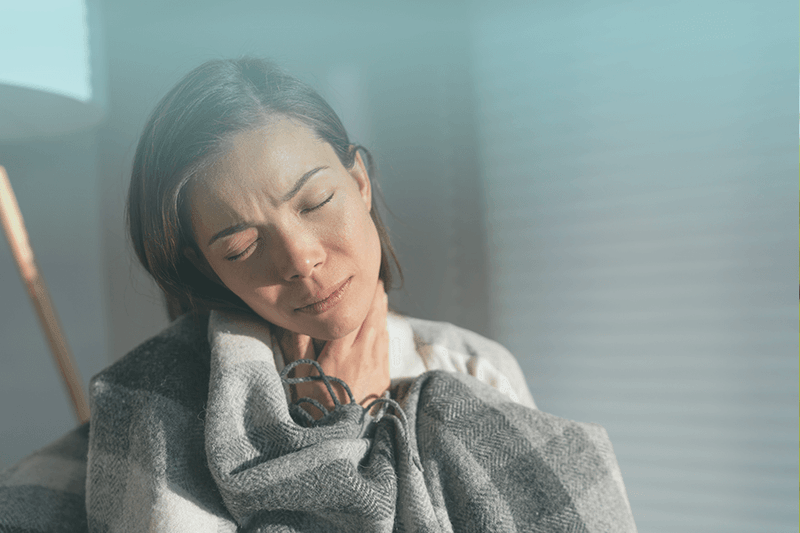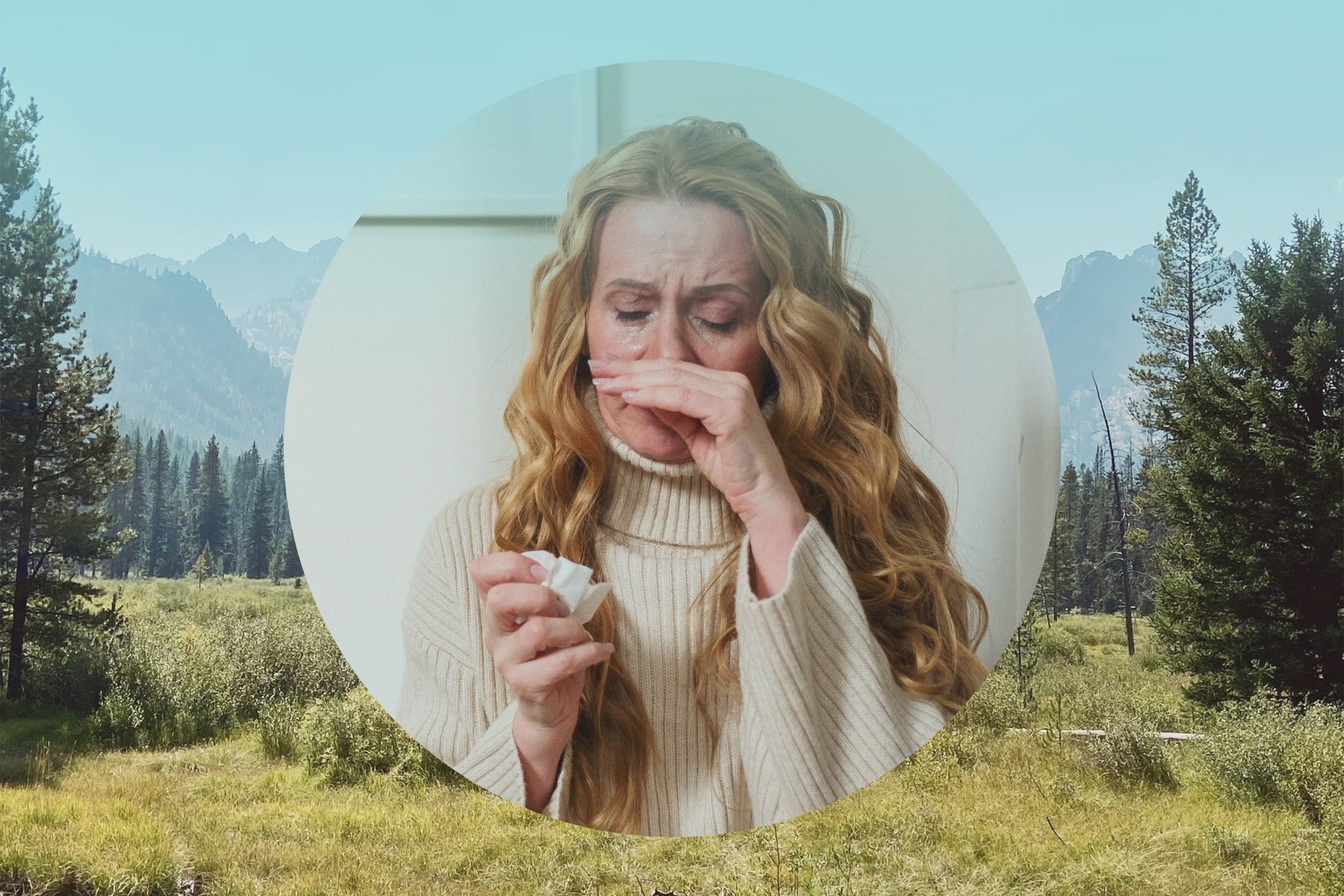Breathe Freely

Everything You NEED to Know About Cedar Fever in Texas
As winter approaches in Texas, the “Cedar Fever” season begins in earnest. If you notice certain cold and flu-like symptoms from November to March, it could be allergies to cedar pollen. Unsure what that means or what to expect? We’ve got you covered!
What Is Cedar Fever in Texas?
When we think of seasonal allergies, we typically imagine stuffy days in the fall, spring, and summer. We may even imagine days where the trees, weeds, and grasses are so thick with pollen, that a yellow haze lingers like a low-lying cloud.
But did you know that the approach of Texas winter also brings on a seasonal phenomenon known as “cedar fever”? While symptoms of cedar fever vary, there are certain differences to note between this allergic reaction and common colds and flu viruses. Not sure if your ailment is from cedar fever or something else? With an easy, at-home test, you can get to the bottom of it.

The Primary Causes of Cedar Fever
Texas cedar fever is mainly attributed to mountain cedar trees. Although there are many varieties of mountain cedar, the main culprit in Texas is the Ashe Juniper. While females do not produce pollen, their male counterparts more than compensate. Released from an orange-brown cone-like structure, the pollen is then carried by the wind. Sometimes, hundreds of miles away!
If you experience Texas cedar fever, there are multiple reasons. Firstly, you might be in an area of heavy pollination. Secondly, wind and weather patterns (i.e., rain) may further spread the pollen grains. Another reason is your body, which may mistakenly perceive pollen as a threat, triggering an immune response that causes your symptoms.
Should You Be Concerned About Texas Cedar Fever?
Cedar fever, like all allergies, varies widely between individuals. Whether you’re struggling with seasonal allergies due to ragweed or managing perennial (year-round) allergens like pet dander and dust mites, your immune system plays a major role.
Aside from unique sensitivities, changing weather patterns and climate factors also impact the severity and duration of cedar fever. Because no one size fits all, you should always consult your healthcare provider about personalized treatment options. An allergist or immunologist can help you diagnose and address the precise environmental allergens triggering your symptoms.
The Worst Months for Cedar Fever
Although everyone’s symptoms and sensitivities vary, cedar fever in Texas typically peaks in the months of winter. December, January, and February may usher in all kinds of nasty symptoms, from nasal congestion to watery, reddened eyes, and even serious allergy fatigue.
But don’t let your guard down! Many people also experience adverse reactions in November and March. Because of seasonal fluctuations in temperature and precipitation, you should always keep an eye on pollen counts near you. Climate-related changes in tree species and reproductive cycles also impact the worst months.
As always, consult a medical professional for proper diagnosis and treatment of your cedar fever symptoms.
Texas Cedar Trees Are A Different Breed!
When we speak of cedar season in Texas, we’re typically referring to the genus of Junipers. Although people often refer to Ashe Junipers as “mountain cedars,” or just cedars, they are technically not cedars. True cedars are needled, whereas true Juniper trees have small, overlapping scales on their leaves.
As it turns out, the “mountain cedar” is distinct in other ways as well. Aside from pollinating in the winter when most trees pollinate in springtime, Ashe Junipers also love to free their pollen in vast quantities. Typically occurring right after a cold front, this concentrated release can even trigger symptoms in people otherwise unaffected by tree pollen.
Where To Expect Cedar Fever in Texas
From the Red River basin to the Rio Grande border, you can expect to experience allergies to the mountain cedar. Of course, this is never set in stone. Given that pollen can travel for hundreds of miles on strong winds, you may find yourself sneezing, coughing, and feeling yucky far, far away from the danger zone.
Whether you’re up close and personal to see the trees ‘smoking’ with pollen, or off the beaten path, feeling safe and secure, never assume you’re in the clear. Most prominent in Central Texas west of the I-35 corridor, cedar fever can strike when you least expect it…
You should also take note of Redcedars, which like Ashe Junipers, also pollinate around December and January. Found predominantly in eastern Texas, these cedars may cause symptoms almost indistinguishable from those of traditional cedar fever.
If you’re unsure, you can always begin with in-home allergy tests to help determine the precise allergen affecting your immune system.
How Weather Can Worsen Symptoms of Cedar Fever
Whether you’re on a remote ranch in eastern Texas or in the heart of ‘weird’ Austin, you should always keep an eye on the weather. Given that cedars love to release pollen following a cold front, the explosion of pollen counts can be fast and dramatic. In fact, the mere sight of a Juniper plume can be bewildering for first-time observers.
The reason this eruption occurs in such a fantastic fashion is due to three main factors:
- Dry Air
- Wind Shift
- Pressure Change
These acute, post-cold front conditions are the perfect recipe for a full-on pollen release. What happens is actually quite amazing (if it weren’t for those darn allergies). Essentially, the tree’s pollen cones all open up simultaneously, causing the signature pollen cloud that can then drift and disperse for untold miles.
Be warned, if you’re near the epicenter of the release, your symptoms can become severe rapidly.
How Does Rain Affect The Release of Cedar Pollen
Contrary to common belief, rain is not always good for reducing pollen. While we often think that rain cleanses the pollen from the air - and it does - rain can also cause bigger pollen particles to burst. Once ruptured, pollen may remain in the air for extended periods, especially after the rain has subsided.
Bottom line: you can still experience cedar fever in Texas, regardless of precipitation.
The Most Common Symptoms of Cedar Fever in Texas
Throughout Texas, sufferers of allergies experience cedar fever in varying degrees. Depending on immune system sensitivities, weather patterns, and climate factors, cedar fever can range from minor sniffles to serious congestion and fatigue.
COVID-19, Flu, Cold, or… Cedar Fever?
Unfortunately, many people may struggle to differentiate their symptoms from those of colds and flu viruses. Complicating this is the fact that Texas’ cedar fever season occurs during the winter when flu season typically hits. With variants of COVID-19 still circulating as well, it can feel like a complete guessing game!
Fortunately, the symptoms of cedar fever can be determined if you know what to look for. As always, consult a physician about your specific case.
The Symptoms of Cedar Fever in Texas
- Watery, itchy eyes
- Sneezing
- Body itching
- Clear mucus
- Stuffy nose
- Runny nose
- Aches & pains
- Smell loss
- Fatigue
- Sore throat
Now, if this sounds like a long list, you’re right. Oftentimes, these symptoms can overlap with other illnesses and ailments. If you’re still unsure, it helps to remember the symptoms cedar fever does not cause. Unlike COVID-19, cedar fever typically does not cause vomiting, nausea, taste loss, or difficulty breathing. Furthermore, cedar fever usually does not trigger a fever, but if it does, it almost never triggers a fever above 101.5°F.
Worried about the potential for cedar fever? Already dealing with symptoms and looking for ways to treat your symptoms? There are various steps you can take, and possible treatments you can try, should you be struggling with allergies to cedar pollen.
Preventing and Treating Cedar Fever in Texas
As always, you should consult a healthcare provider for personalized treatment options, especially if your symptoms are chronic or severe. Given that cedar fever season can last from November to March, you may experience intermittent or persistent allergies for five months! Not to mention, other allergens could also affect you, thereby complicating a proper diagnosis and treatment plan.
Want to Nip Cedar Fever in the Bud?
Generally speaking, you can always take preventative steps and at least try over-the-counter remedies to treat your symptoms. From nasal sprays such as Flonase to antihistamines like Benadryl, various medications might help. You can alternatively use herbal teas and Vitamin C supplements to potentially boost your immune defenses.
Some people also swear by neti pots, which may help clear your nasal passages. Similar devices like bulb syringes may also help ‘irrigate’ the nose and sinuses.
Of course, why use medicines if you can prevent your symptoms in the first place? While there are no surefire solutions to cedar fever in Texas, certain preventative measures may at least reduce your exposure.
Consider:
- Washing hair and clothing when returning indoors
- Washing bedding routinely
- Showering or changing clothes before getting in bed
- Using an air purifier
- Wearing a surgical mask outdoors on high-pollen days
- Wiping or washing pets that track in pollen
With these mostly simple and common sense measures, you can reduce your exposure to cedar pollen and hopefully prevent some of those nasty cedar fever allergies. If you’re still finding yourself overcome by allergic reactions, or seek another option, consider allergy drops.
Start Treating Your Cedar Fever With Immunotherapy
According to the Asthma and Allergy Foundation of America, Dallas, Texas, ranks as the second worst city for allergy sufferers. Whether you’re implementing an action plan against cedar fever or trying to treat perennial mold allergies, you should always have faith in your approach.
At Quello, we offer sublingual allergy drops catered to your precise immune system needs. By taking a simple at-home allergy test, you can then send your results to our lab. In just a short time, we can formulate the immunotherapy drops right for you.
If you’re looking for a potential path to lasting, allergy-free living in Texas, our treatment options might be right for you!
Note: While allergy drop immunotherapy is supported by some research, it does not work for all patients. As always, consult your healthcare provider for personalized treatment protocols that best fit your needs.

FAQ
Is Texas Cedar Fever A Serious Issue?
That all depends! If you’re vulnerable to cedar pollen, or even tree pollen in general, you may experience a range of allergic reactions. Because Ashe Junipers and Redcedars release their pollen in vast quantities, this may trigger allergies in people who may otherwise be asymptomatic. Again, it all varies based on your sensitivities, proximity to pollen, and other climate and weather-related factors. Speak with a medical professional about your risks and exposure.
How Long Does Cedar Fever Last?
Cedar fever in Texas can last from November through March, with the peak allergies occurring in December, January, and February. Because these particular tree species love to release pollen following a cold front, you should keep a close eye on your local weather. As always, the severity and duration of symptoms can vary vastly not just between people, but across locations, seasons, and years. One way to determine your susceptibility to cedar pollen is by taking an allergy test.
What Do At-Home Allergy Tests Measure?
At-home allergy tests vary by design and function, but the typical environmental allergen test will look for common allergens in your immediate surroundings. If you are experiencing cedar fever, that’s because cedar pollen is in your environment. It may be in the air, in your home, at work, on your clothes, tracked in by guests or pets, etc. After using a DIY test kit, you can then have your blood sample analyzed for the precise allergen, or antigen, triggering your symptoms. Over time, allergy drops may be able to alleviate these allergies.
Do Allergy Drops Work Against Texas Cedar Fever?
Although allergy drop immunotherapy is supported by specific research, it is not a proven solution. As with any medicine or treatment protocol, allergy drops may work for some and not for others. As always, you should first speak with your healthcare provider about personalized treatment options for your allergies. Our seasoned specialists are always happy to address your questions and concerns. Email or call us today!
Overcome your allergies at home with our doctor-led therapy.
Get started with our free allergy test kitGet Started with no test needed.
Overcome your allergies at home with our doctor-led therapy.
Get started with our free allergy test kitGet Started with no test needed.




